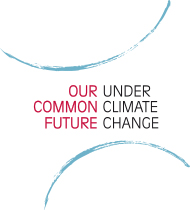Organizers : The European Centre for Medium-Range Weather Forecasts (ECMWF)
Date :� July 9, 2015 at 6pm
Location :� Ballon de Paris, Parc Andr� Citro�n (Paris 15�me)
Expected number of participants :� 50 to 100
Nature of participants :� Climate change professionals, policymakers, scientists, public in general
Keywords :� Climate Change, Copernicus, numerical modelization, Science, Policy Decisions
Keynote speakers :�
- Jean Noel Thepaut, Head of the Copernicus Climate Change Service
- Vincent-Henri Peuch, Head of Copernicus Atmosphere Monitoring Service at CEPMMT
- Jean-Baptiste Renard, CNRS research director, air quality specialist



